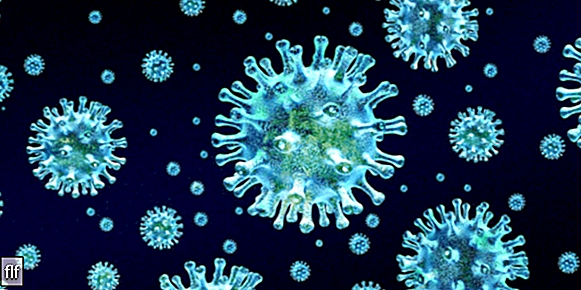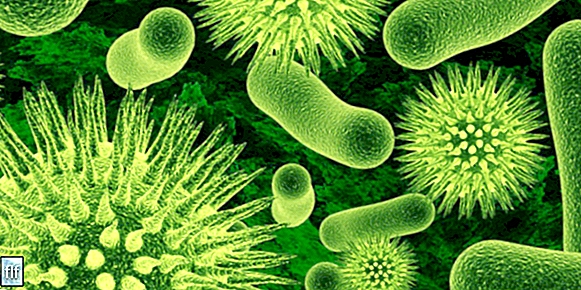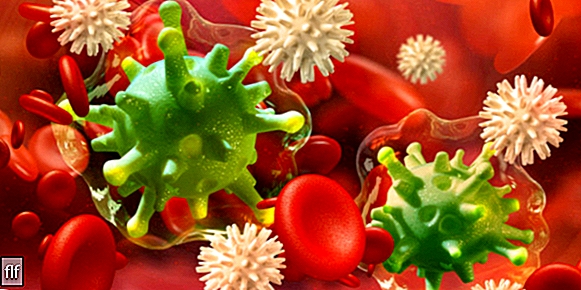- What is a microorganism?
- Characteristics of microorganisms
- Types of microorganisms
- Harmful and beneficial microorganisms
- examples of microorganisms
We explain what a microorganism is, its characteristics and classification. In addition, beneficial and harmful microorganisms.

What is a microorganism?
Microorganisms are those organisms which, due to their small size, are imperceptible to the eye.
Also called "microbes”, these organisms have a very basic biological organization: a significant proportion of them have only a single cell. In addition, they are characterized by the existence of numerous varieties, of different shapes and sizes.
The unicellular organisms prokaryotes Y eukaryotes, along with certain mushrooms and algae, make up the universe of microbes.
Characteristics of microorganisms

Microorganisms have a number of characteristics in common:
- Their size is so small that they are imperceptible to the naked eye.
- Their metabolic reactions are very fast.
- Their relationship with the environment is intense.
- they need Water to metabolize.
- They develop dispersal and endurance.
- They have the ability to alter the environment in which they are found.
- They reproduce at a great speed.
- His activity is essential for the life in the planet.
- They are part of the biogeochemical cycles that take place in the nature.
- They are very light, so they are transported in the air.
Types of microorganisms
Within nature, different types of microorganisms can be identified. Some of them are:
- Virus. They are the most basic microbes and can only be perceived with microscopes electronics. They are infectious agents that, in order to replicate, must infect other unicellular organisms, to which they inoculate their genetic content (they can only reproduce in a host cell).
- Cyanophyceae algae. They are large bacteria and are characterized by making photosynthesis very similarly to the floors, that is, oxygenic (they give off oxygen).
- Mushrooms. Many of the organisms that make up the Fungi Kingdom are microscopic (for example, the yeast).
- protists. They are large volume eukaryotic unicellular microbes. They usually develop in aquatic environments fresh or salt water, or in very humid places. Although some varieties develop parasitic lives, in general, these organisms prey on other microorganisms when feeding.
- archaea and bacteria. They are two types of prokaryotic and unicellular organisms, and they are the simplest microbes. They make up the group of microbes with the greatest presence on Earth, they feed on the habitat where they are and their reproduction is from the division of your genetic material.
Harmful and beneficial microorganisms

Viruses can only reproduce inside a host cell.
harmful microorganisms
There are microorganisms that are harmful to the Health of the people, because by attacking vital cells, they can cause diseases that, on some occasions, can lead to death. death. Some of these microbes are:
- bacteria. They are microorganisms that belong to the Kingdom Monera, today divided into two domains: Bacteria and Archaea. They release toxins and can survive inside or outside a cell. In addition, they are unicellular and lack a membrane that delimits the nucleus. Not all bacteria are pathogenic, but some may be beneficial to health or neutral.
- Virus. Are microbes that are spiral or spherical in shape and that can only reproduce within a host cell. These infectious agents have a single type of nucleic acid and they are always pathogenic. Viruses can never be eliminated with antibiotics and only their symptoms can be attacked.
- Mushrooms. These microbes can cause infectious diseases and thrive on the outside of bodies.
beneficial microorganisms
Within microorganisms there are also varieties that are beneficial to life, environment and the health of human being. Some examples where microbes intervene in a beneficial way are:
- Food industry. Microbes play a fundamental role in the production of certain products. For example, yogurt, cheese or beer are the result of foods fermented, thanks to the action of microbes. In these cases, the microbes produce lactic acid that facilitates the preservation of food.
- Body. There are microorganisms that participate in certain processes within the human body (as in digestion) and even act in defense of other organisms that can affect health.
- Trash. Through certain biological processes (such as stabilization or decomposition), microbes clean up the waste. They end up turning the waste into humus or compost.
- Agriculture. Many of the microorganisms that inhabit the I usually facilitate agricultural production, either because they act as pesticides or because they help plants grow.
examples of microorganisms

Some of the best known and studied microorganisms that can cause diseases are the following:
- Escherichia coli. They are the microbes that cause diseases such as hemorrhagic diarrhea or kidney failure. They live in the intestines.
- Salmonella.They are microorganisms that cause various diseases. Many of them are diarrheal. It spreads through urine and feces.
- Streptococcus pneumoniae. They are the microbes that cause diseases such as pneumonia, sinusitis or otitis, as well as meningitis.
- Mycobacterium tuberculosis. In general, they affect the functioning of the liver and the lung, but they have the capacity to make any organ of the body sick. They are microbes very resistant to cold.
- Yersinia pestis. This microbe lives in rodents, although it is transmitted through fleas. It caused the disease known as the "black plague" in Europe, which killed more than 200 million people.
- Bacillus cereus. It is a microorganism that causes intoxication, vomiting, diarrhea and nausea. It lives in food and is characterized by reproducing very easily.
- Treponema pallidum. It is a microorganism that is combated with penicillin and is characterized by not surviving outside the body. In addition, this microbe causes the sexually transmitted disease called syphilis.
